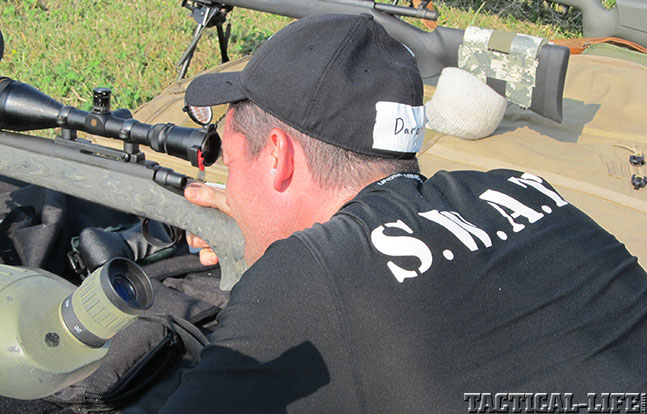Police countersnipers are more commonly known as marksmen. Many of the traits seen in military snipers are also found in those who choose the life of the long gun in law enforcement. All snipers, regardless of their branch or law enforcement agency, share and use the same set of core skills. However, each one has developed additional skills that do not always apply to the other.
- RELATED: Sniper School: William Graves’ GPS Defense
- RELATED: Remington Model 700 Archangel Countersniper
The operational differences between the military and their law enforcement cousins are dramatic, yet it all boils down to pressing a trigger. One of the primary differences is range. While most military shooters have the potential to make incredibly long shots, the police marksman is bound by urban confines. They simply do not operate in areas where they have large open areas to shoot.
RANGE & ROLE
Advertisement — Continue Reading Below
Most LE shooting scenarios are in downtown areas with little more than 75 yards to the target. While this may seem to make the shooting easier, it is complicated a great deal by the rules of engagement police must follow. Many military shooters see “minute of man” as operationally sound. Their job is the elimination of hostile personnel, and torso shots are well within the effective target area. Police marksmen may be required to take a shot on a partially exposed head behind glass. To say that they must shoot minute of angle is an understatement. In fact, a majority of the shots police marksmen will take are headshots. They are required to neutralize the threat with one round to avoid collateral damage caused by a wounded suspect.
Additionally, military snipers are often tasked with taking down “targets of opportunity,” or enemy combatants that fit their rules of engagement. Police marksmen rarely see more than one designated target in a scenario. The task of a police marksman is hyper focused and demanding. Let’s take this opportunity to look at the anatomy of a police marksman and 20 things you might not have known about them.
- The most common rifle seen in the law enforcement community is the Remington Model 700 bolt action chambered in 7.62mm/.308 Winchester.
- Police marksmen are called on as shooters first and observers second.
- They must have the skill to consistently shoot a 1-inch group or smaller at 100 yards or closer.
- Most agencies partner a marksman with another officer to help spot.
- Of all the police marksmen shots in the last 20 years, 95 percent took place between 0 and 100 yards.
- The most common round seen is the 168-grain hollow-point boat-tail (HPBT).
- While military shooters strive to stay as far away from their target as possible, police marksmen do everything they can to get closer.
- LE marksmen rarely shoot from a prone position. A majority of shots are taken from improvised positions, such as squatting or sitting.
- Most designated marksmen are part of a larger critical event or SWAT team.
- A majority of police marksmen operations center around hostage or barricaded-suspect scenarios.
- Police marksmen oftentimes have to execute a command fire—firing at the exact moment the scene commander dictates.
- Marksmen oftentimes build complete range and orientation books for their areas of responsibility. That way if they are called into action, they begin with solid range data.
- Most professional SWAT teams require extensive training and selection for their designated marksmen.
- Unless connected to a full-time SWAT team, police marksmen still manage their day-to-day duties as police officers.
- Most law enforcement rifles are stock because of liability concerns.
- During extended deployments, marksmen will take turns watching the scene through the scope.
- Smoking and coffee drinking is highly discouraged, as it affects the vision of the LE marksmen.
- The overwhelming majority of marksmen callouts do not result in shots fired.
- Ninety-five percent of SWAT countersniper engagements occur in low-light conditions after nightfall.
- The American Sniper Association calculates that out of 200,000 SWAT callouts over the last 20 years across the U.S., only 172 incidents have ended with a marksman killing a suspect.
Police countersniper, marksman, defensive law enforcement rifleman—these are all different names for the same person who has accepted the huge responsibility of climbing behind a rifle. A person who understands that a shot 1-inch to the right or left could make the difference between success and tragedy.
Advertisement — Continue Reading Below
























